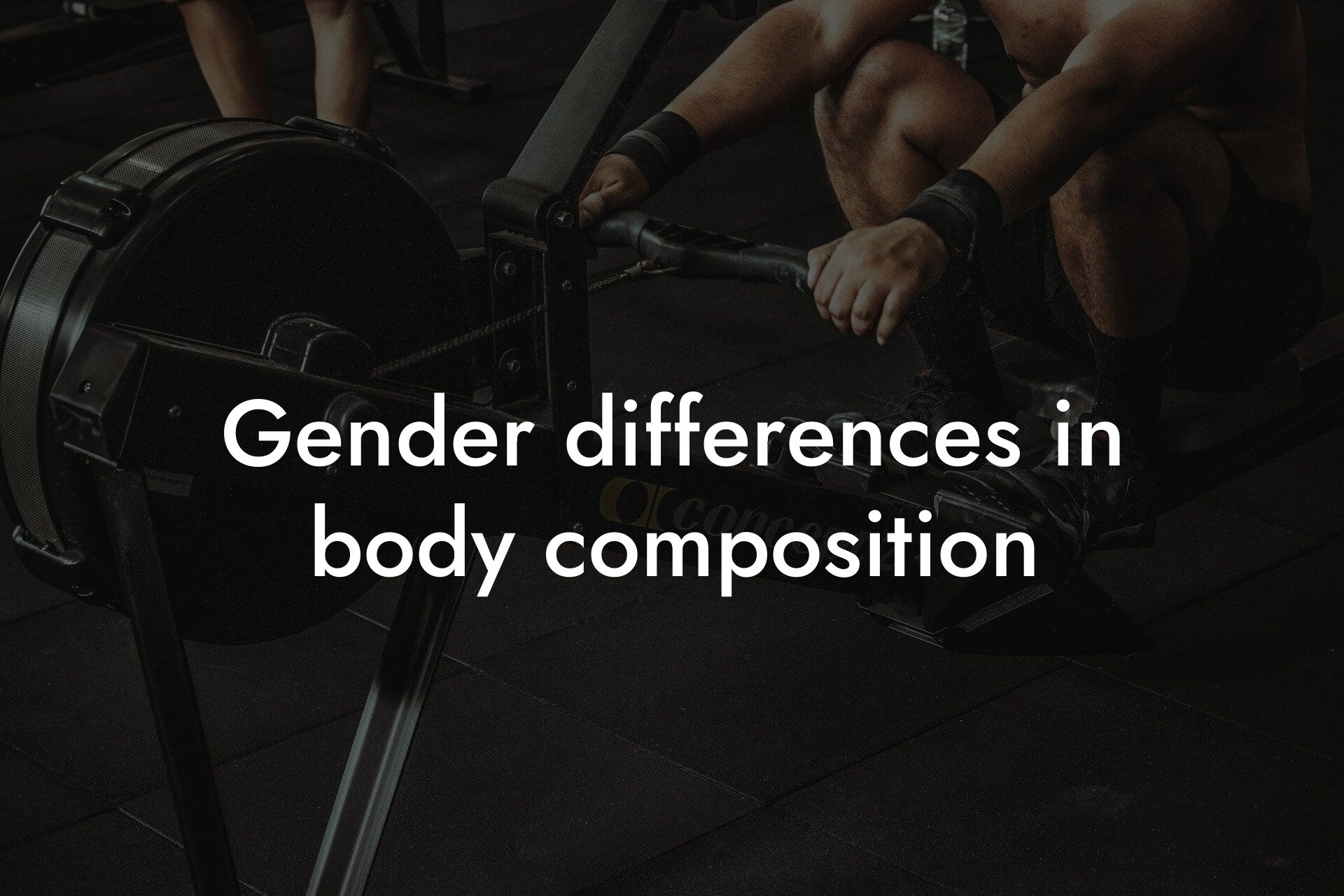As a high-earning professional, you understand the importance of maintaining a healthy physique and optimal body composition. One crucial aspect of this is monitoring visceral fat, a type of fat that accumulates around internal organs and can significantly impact your overall health. At Tano Performance Group, we utilize cutting-edge DEXA (Dual-Energy X-ray Absorptiometry) technology to provide a comprehensive body assessment, including the detection of visceral fat. In this article, we'll delve into the world of DEXA scans and explore how they detect visceral fat, empowering you with the knowledge you need to take control of your health and physique.
Table of Contents
What is Visceral Fat?
Visceral fat, also known as intra-abdominal fat, is a type of fat that accumulates around internal organs in the abdominal cavity, including the liver, stomach, small intestine, and kidneys. This type of fat is different from subcutaneous fat, which is located just beneath the skin. Visceral fat is a major risk factor for various health conditions, including type 2 diabetes, cardiovascular disease, and certain types of cancer. Excess visceral fat can also impair insulin sensitivity, leading to metabolic syndrome and other metabolic disorders.
Why is Visceral Fat Detection Important?
Visceral fat detection is crucial because it allows you to take proactive steps to reduce your risk of developing chronic diseases. Excess visceral fat can lead to a range of health problems, including:
- Insulin resistance and type 2 diabetes
- Cardiovascular disease and high blood pressure
- Certain types of cancer, such as colorectal and breast cancer
- Metabolic syndrome and other metabolic disorders
- Reduced cognitive function and increased risk of dementia
By detecting visceral fat early on, you can make lifestyle changes to reduce your risk of developing these conditions and maintain optimal health.
How Do DEXA Scans Work?
DEXA scans use a low-level X-ray beam to measure bone density and body composition. The scan itself is quick and painless, taking only a few minutes to complete. During the scan, you'll lie on a flat table, and the DEXA machine will pass over your body, emitting a low-dose X-ray beam. This beam is absorbed by different tissues in your body, including bone, lean mass, and fat.
The DEXA machine then uses this data to create a detailed image of your body composition, including the distribution of fat and lean mass. This information is used to calculate various metrics, including your visceral fat area (VFA) and visceral adipose tissue (VAT).
How Do DEXA Scans Detect Visceral Fat?
DEXA scans detect visceral fat by measuring the X-ray absorption patterns in the abdominal region. The scan can distinguish between different types of tissue, including visceral fat, subcutaneous fat, and lean mass. The machine uses this data to create a detailed image of your abdominal cavity, allowing for accurate measurement of visceral fat.
The VFA is calculated by measuring the area of visceral fat in a specific region of the abdominal cavity, typically between the L4 and L5 vertebrae. This measurement is then used to estimate the amount of visceral fat in your body.
What are the Benefits of DEXA Scans for Visceral Fat Detection?
DEXA scans offer several benefits for visceral fat detection, including:
- High accuracy: DEXA scans are highly accurate in measuring visceral fat, allowing for precise monitoring and tracking of changes over time.
- Non-invasive: DEXA scans are quick, painless, and non-invasive, making them an attractive option for individuals who want to monitor their visceral fat levels.
- Comprehensive body assessment: DEXA scans provide a comprehensive assessment of body composition, including bone density, lean mass, and fat distribution.
- Early detection: DEXA scans can detect visceral fat early on, allowing for proactive steps to be taken to reduce health risks.
What Can You Do with Your Visceral Fat Results?
Once you've received your visceral fat results from your DEXA scan, you can use this information to make informed decisions about your health and fitness. Some potential next steps include:
- Creating a personalized workout plan to target visceral fat reduction
- Developing a healthy nutrition plan to support weight loss and fat reduction
- Setting realistic goals and tracking progress over time
- Consulting with a healthcare professional or registered dietitian for personalized guidance
Visceral fat detection is a crucial aspect of maintaining optimal health and physique. At Tano Performance Group, we're committed to providing high-earning professionals like you with the tools and information you need to take control of your health. By understanding how DEXA scans detect visceral fat, you can make informed decisions about your health and fitness, reducing your risk of chronic diseases and achieving your goals.
Remember, knowledge is power. Take the first step towards optimal health and physique by scheduling a DEXA scan with Tano Performance Group today.
Frequently Asked Questions
What is a DEXA scan?
A DEXA (Dual-Energy X-ray Absorptiometry) scan is a non-invasive medical imaging test that measures bone density and body composition, including visceral fat. It's a quick and painless procedure that uses low-level X-rays to produce detailed images of the body's internal structures.
What is visceral fat?
Visceral fat, also known as intra-abdominal fat, is a type of fat that accumulates around the organs in the abdominal cavity, such as the liver, stomach, and intestines. It's a key indicator of metabolic health and is linked to an increased risk of chronic diseases like diabetes, cardiovascular disease, and certain types of cancer.
How does a DEXA scan detect visceral fat?
A DEXA scan detects visceral fat by measuring the density of the fat tissue in the abdominal region. The scan uses two X-ray beams with different energy levels, which are absorbed by the body at different rates. This allows the scanner to distinguish between bone, lean tissue, and fat tissue, providing an accurate measurement of visceral fat.
What are the benefits of measuring visceral fat with a DEXA scan?
Measuring visceral fat with a DEXA scan provides valuable insights into your metabolic health and allows you to take proactive steps to reduce your risk of chronic diseases. It also helps you track the effectiveness of your diet and exercise program, making it an essential tool for achieving your fitness goals.
Is a DEXA scan the only way to measure visceral fat?
No, there are other methods to measure visceral fat, including CT and MRI scans, as well as anthropometric measurements like waist circumference and skinfold thickness. However, DEXA scans are a popular choice due to their ease of use, low radiation exposure, and high accuracy.
How accurate are DEXA scans in measuring visceral fat?
DEXA scans are highly accurate in measuring visceral fat, with studies showing a high correlation between DEXA measurements and those obtained through more invasive methods like CT scans. However, it's essential to ensure that the scan is performed by a qualified technician and that the machine is properly calibrated.
What is the procedure for a DEXA scan?
The procedure for a DEXA scan is quick and easy. You'll lie on a flat table, and the scanner will move slowly over your body, taking X-ray images of your bones and body composition. The entire process typically takes around 10-15 minutes, and you'll be able to resume your normal activities immediately after.
Is a DEXA scan painful?
No, a DEXA scan is a painless procedure. You'll feel no discomfort or sensation during the scan, and there are no injections, incisions, or other invasive procedures involved.
Are DEXA scans safe?
Yes, DEXA scans are extremely safe. They use very low levels of radiation, which are equivalent to a few days of background radiation from natural sources. The scan is also non-invasive, so there's no risk of infection or other complications.
How often should I get a DEXA scan?
The frequency of DEXA scans depends on your individual needs and goals. If you're using the scan to track your progress, you may want to get scanned every 6-12 months. If you're using it to monitor your risk of chronic diseases, your healthcare provider may recommend a scan every 1-2 years.
Can I get a DEXA scan if I'm pregnant or breastfeeding?
It's generally recommended to avoid DEXA scans during pregnancy and breastfeeding, as the radiation exposure, although low, may pose a risk to the fetus or baby. However, your healthcare provider may recommend a scan in certain circumstances, so it's essential to consult with them before scheduling a scan.
How do I prepare for a DEXA scan?
To prepare for a DEXA scan, wear loose, comfortable clothing and avoid wearing metal objects like jewelry or glasses. You should also avoid eating a heavy meal before the scan, as this can affect the accuracy of the results. Additionally, inform your technician if you've had a barium study or taken any contrast agents in the past few days.
What do the results of a DEXA scan mean?
The results of a DEXA scan provide a detailed breakdown of your body composition, including your bone density, lean mass, and fat mass. The scan will also provide a measurement of your visceral fat area, which is expressed in square centimeters (cm²). Your healthcare provider will help you interpret the results and develop a plan to improve your metabolic health.
What is a healthy range for visceral fat?
A healthy range for visceral fat varies depending on your age, sex, and other factors. Generally, a visceral fat area of less than 100 cm² is considered healthy, while a measurement above 130 cm² indicates an increased risk of chronic diseases.
How can I reduce my visceral fat?
Reducing visceral fat requires a combination of a healthy diet, regular exercise, and stress management. Focus on whole, unprocessed foods, and incorporate high-intensity interval training (HIIT) and strength training into your workout routine. Additionally, prioritize sleep and stress-reducing activities like yoga or meditation.
Can visceral fat be reduced through diet alone?
While diet plays a significant role in reducing visceral fat, it's unlikely to achieve significant reductions through diet alone. A comprehensive approach that includes regular exercise and stress management is essential for achieving optimal results.
How long does it take to see results from visceral fat reduction efforts?
The time it takes to see results from visceral fat reduction efforts varies depending on individual factors, such as starting point, diet, and exercise habits. However, with a consistent and comprehensive approach, you can expect to see noticeable improvements in 3-6 months.
Can visceral fat be a sign of an underlying health condition?
Yes, excess visceral fat can be a sign of an underlying health condition, such as insulin resistance, metabolic syndrome, or Cushing's syndrome. If you're concerned about your visceral fat levels, consult with your healthcare provider to rule out any underlying conditions.
How does visceral fat affect my overall health?
Excess visceral fat is linked to an increased risk of chronic diseases, including type 2 diabetes, cardiovascular disease, and certain types of cancer. It can also affect your mental health, energy levels, and overall quality of life.
Can I use a DEXA scan to track my progress?
Yes, a DEXA scan is an excellent tool for tracking your progress over time. By comparing your results at regular intervals, you can monitor changes in your body composition and adjust your diet and exercise program accordingly.
How much does a DEXA scan cost?
The cost of a DEXA scan varies depending on your location, healthcare provider, and insurance coverage. On average, the cost ranges from $50 to $200, although some insurance plans may cover the procedure.
Is a DEXA scan covered by insurance?
Insurance coverage for DEXA scans varies depending on your provider and policy. Some plans may cover the procedure for certain medical conditions or as part of a routine health checkup, while others may not. Check with your insurance provider to determine your coverage.
Here are some related articles you might love...
- The role of brown fat in body composition
- How body composition changes with endurance training
- Gender differences in body composition
- Understanding bone marrow density in DEXA scans
- Advanced body composition metrics: Lean mass index
- The impact of muscle asymmetry on body performance
- How body composition affects metabolic rate
- Differences between subcutaneous and visceral fat
- How hydration levels affect body composition results
Zak Faulkner
Zak Faulkner is a leading authority in the realm of physical health and body composition analysis, with over 15 years of experience helping professionals optimise their fitness and well-being. As one the experts behind Tano Performance Group, Zak has dedicated his career to providing in-depth, science-backed insights that empower clients to elevate their physical performance and overall health.
With extensive knowledge of DEXA technology, Zak specializes in delivering comprehensive body assessments that offer precise data on body fat, muscle mass, bone density, and overall physique. His expertise enables individuals to make informed decisions and achieve their fitness goals with accuracy and confidence. Zak’s approach is rooted in a deep understanding of human physiology, combined with a passion for helping clients unlock their full potential through personalised strategies.
Over the years, Zak has earned a reputation for his commitment to excellence, precision, and client-focused service. His guidance is trusted by top professionals who demand the best when it comes to their health. Whether advising on fitness programs, nutritional strategies, or long-term wellness plans, Zak Faulkner’s insights are a valuable resource for anyone serious about taking their health and fitness to the next level.
At Tano Performance Group, Zak continues to lead our Content Team revolutionising how professionals approach their physical health, offering unparalleled expertise that drives real results.




